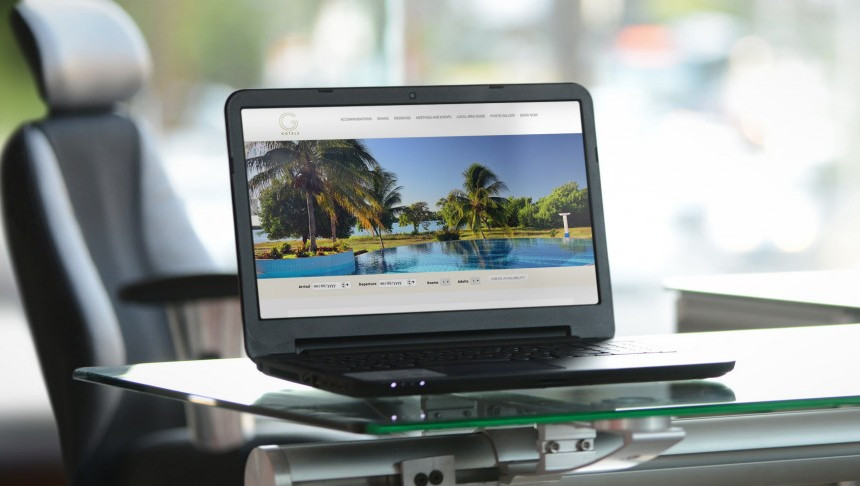
We’ve broken down the 5 different types of hotel demand and what they mean. Now let’s use them to our advantage.
NB: This is an article from Revinate
Converting Existing Demand
Let’s take a closer look. First, you’ll need to establish a baseline for your demand conversion rate. We’ve broken down the formula for you:
Converted Demand / (Converted Demand + Reservations Denials & Regrets + Booking Engine Denials & Regrets) = Demand Conversion Rate
Subscribe to our weekly newsletter and stay up to date
This will allow you to better understand how effectively you’re converting bottom-of-the-funnel shoppers into paying your guests. From here, you can utilize new tactics to influence your demand conversion rate.
This will allow you to better understand how effectively you’re converting bottom-of-the-funnel shoppers into paying guests. From here, you can utilize new tactics to influence your demand conversion rate.
| TRADITIONAL TACTICS | NEW TACTICS |
| Pricing | Empower your reservations team to close more business |
| Advertising | Outbound call conversion |
| Evergreen promotions | Website & shopping cart abandonment recover, automated email campaigns, cancellation recover campaigns |
| Loyalty programs | Outbound sales efforts to guests frequenting your market |
| Responding to inbound group leads | Prioritize outreach based on qualifications |
Create New Demand
It’s time to consider new ways of targeting prospective guests that haven’t previously considered your market or hotel. Here are a few ideas to get you started: Align your sales, marketing, and revenue management leaders We all have the weekly review of the STR reports, but now it’s time to change these to a synergistic, flywheel type of meeting. Develop an MQL/SQL process for group or corporate account acquisition, and a B2C lead nurturing automation process for transient business. Not sure what these terms mean? Stop reading this and Google them now. We’ll wait, we promise. Utilize targeted digital marketing campaigns that leverage your current customer base to create lookalike audiences that share the same behavioral characteristics as those who already love your hotel.
Expand Your Market’s Demand
Explore new ways to grow your entire market’s pie, not just your slice of it. Work with your local tourism bureau or chamber of commerce and target events and accounts that have used comparable or competitive markets in the past, but haven’t visited your market or submarket. Harness the current climate to redirect displaced demand. For example, combine advertising and promotional efforts within your market to convince nervous beach-bound travelers to visit Southern California rather than Florida by presenting it as a safer option. Consider your market’s positioning. Are there additional amenities or services that would help your market succeed? One organization that has done this successfully is Sage Hospitality Group, which often works with local governments to establish their hotels as a launchpad for their urban revitalization plans.
Leverage Your Entire Ecosystem
Work with complementary companies to gain exposure to new audiences. For example, work with local breweries to create a “Bikes & Brews” tour targeted at your drive-market customers. This is a win-win for both the tasting rooms and the hotels. Or partner with a local hospitality school for a series of week-long “boot camp” courses for those looking to work in the hospitality industry. The school sells education, you sell rooms, plus you gain a new recruiting pipeline.
Getting Started
Converting existing demand and creating new demand will require a new set of tools to identify opportunities, quickly implement new strategies, and monitor results. Hoteliers are already combining their external benchmarking data with pace and pickup reports.
You need to expand your analysis to incorporate demand and conversion signals across all dimensions: market segments, sources, geographic origins, rate codes, travel agencies, and target accounts. Leveraging automated technology systems that provide accurate, forward-looking data that allow you to determine which customer subsegments present the best opportunities. Use your recent booking trends by geographic origin data to determine how changing travel restrictions are impacting demand. This enables you to double down on targeted advertising spending to customers that have the ability to travel to your hotel, while cutting spend directed at those who do not.
Automated reporting tools can help you monitor and optimize your demand conversion efforts. And with the right combination, you can combine your reservation conversion and call volume data with the data from your PMS and rate shopping platforms, in order to identify and improve conversion issues. By adopting these techniques to convert existing demand and create demand from new sources, you’ll put your hotel in a position to outperform your competitors.




